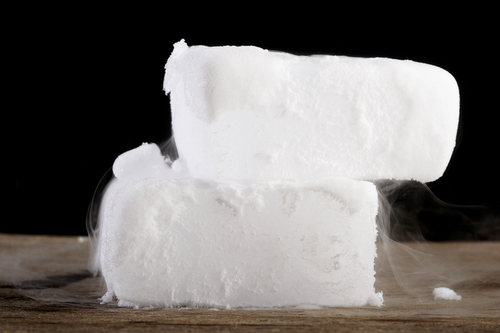
With companies shipping more and more perishable food and drink products—thanks in part to subscription-based snack boxes, meal kit delivery services, and food-centric eCommerce startups—we’ve gotten more and more interest in insulated containers and other cold chain solutions as of late. These handy, food-grade shipping containers are insulated so that they help keep food and beverages fresh, even during long shipping journeys.
Insulated shipping containers are primarily used to mail various perishables, including live seafood, produce, refrigerated foods, and even temperature-sensitive products – such as chocolate, medications, and flowers. One of the questions we’re often asked in regard to insulated containers is if they’re suitable for shipping frozen goods. Indeed, you can use these kinds of containers to ship frozen and perishable foods, so long as you take the appropriate steps.
In other words, it’s not the best idea to simply toss a bunch of frozen items into an insulated container and hope for the best, especially if your products must take a cross-country, multi-day trip to meet the end user. Of course, if you’ve ever gotten something frozen in the mail, you know that dry ice, cooling packs, and specialized packaging are required.
And, if you’ve been unlucky enough to have gotten a thawed or melted product in the mail instead of perfectly frozen one, you know that there’s plenty of margin of error here. Let’s take a look at how you can leverage these frozen shipping containers to ensure that products arrive to consumers in their frozen state.
Getting the Most out of Insulated Shipping Containers
Ensuring that your goods arrive to the end consumer in the way they were meant to is key to customer satisfaction. All shipping containers should be carefully selected in order to help minimize product damage and maximize organization and shipping. The best way to do that is to pick containers tailored to your specific products. In this case, that means using insulated plastic containers for frozen foods.
- Ship in Insulated Containers—Step No.1 for any good frozen shipping strategy is to invest in reusable insulated storage crates right alongside your food-grade containers. What are insulated containers, you ask? These products are similar to insulated Styrofoam or cardboard containers but are usually made of double-walled, insulated polyurethane that keeps cold air in to help maintain product integrity. Therefore, they provide an extra layer of insulation in the warehouse fulfillment center or truck so that refrigerated and frozen goods stay that way. Plus, they’re more cost-effective in the long-run than Styrofoam or cardboard.
- Add Extra Cooling Power—While insulated shipping crates will certainly help keep cold air from escaping, they don’t provide the cold air. For that, you need to send items with dry ice or gel freezer packs. These cooling components shouldn’t be used interchangeably though. Generally, dry ice is the gold standard, but it can’t be shipped via air travel. If air cargo is a part of your logistics strategy, then you need to accommodate for that with alternative cooling products.
Consider Refrigerated Transport—Another aspect to consider when shipping any kind of perishable item is the ambient temperature of the vessel that will be taking it to its final destination. Investing in refrigerated less-than-truckload (LTL) shipping services will help ensure that nothing is compromised along the way. According to the Global Cold Chain Alliance, LTL is a good choice because smaller batches means more control over temperature. Your goods could be shipped with items that must remain at a similar temperature, ensuring that everything gets where it’s supposed to go in its best shape.
- Ship Fast—As obvious as it may seem, most frozen foods should be shipped with expedience in mind. The longer your goods are away from a proper freezer, the more likely they are to melt along the way. Do your best to choose fast shipping solutions when you’re dealing with frozen goods, and understand that though it may be costlier upfront (especially if you decide not to pass those costs on to the consumer), it will save you money on returns and refunds in the long-term.
The bottom line is that the minute your goods leave your facility’s freezer or refrigerator, they’re susceptible to damage. More damage, in fact, than any other kind of goods. However, as long as you implement a good line of defense against thawing and melting, you can safely ship frozen goods without much risk using a combination of insulated containers, dry ice or frozen gel packs and smart shipping strategies.

 Consider Refrigerated Transport—Another aspect to consider when shipping any kind of perishable item is the ambient temperature of the vessel that will be taking it to its final destination. Investing in refrigerated less-than-truckload (LTL) shipping services will help ensure that nothing is compromised along the way. According to the Global Cold Chain Alliance, LTL is a good choice because smaller batches means more control over temperature. Your goods could be shipped with items that must remain at a similar temperature, ensuring that everything gets where it’s supposed to go in its best shape.
Consider Refrigerated Transport—Another aspect to consider when shipping any kind of perishable item is the ambient temperature of the vessel that will be taking it to its final destination. Investing in refrigerated less-than-truckload (LTL) shipping services will help ensure that nothing is compromised along the way. According to the Global Cold Chain Alliance, LTL is a good choice because smaller batches means more control over temperature. Your goods could be shipped with items that must remain at a similar temperature, ensuring that everything gets where it’s supposed to go in its best shape.